bloody sunday
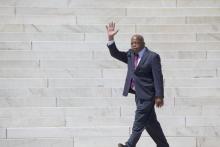
On Jan. 13, Georgia Rep. John Lewis — civil rights icon who was beaten on the Edmund Pettus Bridge in Selma, Ala., marching for voting rights for African Americans in 1965 — said he would not be attending President-elect Donald Trump's inauguration, a first for the longtime congressman since serving. Trump took to Twitter the morning on Jan. 14 to attack Lewis.

The Edmund Pettus Bridge was named after a Confederate general who became a Grand Dragon in the Ku Klux Klan. His name, still emblazoned over the top of that now famous bridge, was a powerful and threatening symbol of white power and supremacy in Selma, Ala. The Student Non-Violent Coordinating Committee (SNCC) had at one time removed Selma from their list of places to organize because “the white folks were too mean, and black folks were too afraid."
But that didn’t deter a group of courageous African Americans from marching across that bridge a half-century ago, risking their lives for the right to vote in America. They were attacked and beaten by the fierce forces, led by notorious Sheriff Jim Clark, for their resistance to the frightening violence of white power.
Last Saturday, during the 50th anniversary event of “Bloody Sunday,” I spent many hours just looking at that bridge. The words that kept coming to me were “courage” and “resistance.” My question became: what bridge we will now have to cross?
Congressman John Lewis, whose skull was cracked that day as a young man, opened the main event.
"On that day, 600 people marched into history … We were beaten, tear gassed, some of us [were] left bloody right here on this bridge. … But we never became bitter or hostile. We kept believing that the truth we stood for would have the final say.”
Then Lewis introduced the president, "If someone had told me, when we were crossing this bridge, that one day I would be back here introducing the first African-American president, I would have said you're crazy.”
What happened on this bridge, President Barack Obama said, “was a contest to determine the meaning of America,” and where “the idea of a just America, a fair America, an inclusive America, a generous America … ultimately triumphed.”
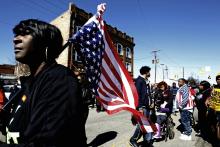
With the 50th anniversary of Bloody Sunday this weekend, America was reminded how this small city helped bring sweeping change to the nation.
But while Selma might have transformed America, in many ways time has stood still in this community of 20,000 that was at the center of the push that culminated with the Voting Rights Act of 1965.
Dallas County, of which Selma is the county seat, was the poorest county in Alabama last year. Selma has an unemployment rate of 10.2 percent; the national rate is 5.5 percent.
More than 40 percent of families and 67 percent of children in the county live below the poverty line. The violent crime rate is five times the state average.
The Birmingham News called the region, known as the Black Belt because of its rich soil, “Alabama’s Third World.”
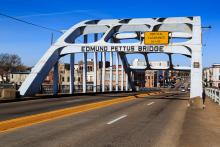
Making a whip of cords, he drove all of them out of the temple, both the sheep and the cattle. He also poured out the coins of the money-changers and overturned their tables.He told those who were selling the doves, ‘Take these things out of here! Stop making my Father’s house a market-place!’ - John 2:15,16
This is one of the most important stories in the life of Jesus. So important, that it’s one of a handful of stories that all four Gospel writers actually all share.
Even though they remember it differently.
Matthew, Mark, and Luke — they recall that this episode where Jesus entered the Temple grounds and stirred stuff up once and for all — they remember it near the end of his life. They place it as one of the main reasons that Jesus is arrested and put to death as a capitol offense against the Roman Empire.
Walking into the Temple — run by the Jewish religious elite who had been put in place by the Roman imperial oppressors — was tantamount into walking into a federal government building and blowing it up.
Except Jesus doesn’t do that. Jesus is a pacifist. Jesus is a prophet.
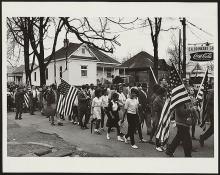
The images of that day in 1965 were quickly seared into the American consciousness: helmeted Alabama state troopers and mounted sheriff’s possemen beating peaceful civil rights marchers in Selma, Ala., as clouds of tear gas wafted around the Edmund Pettus Bridge.
On March 7, 1965 — a day that would become known as “Bloody Sunday” — 600 marchers heading east out of Selma topped the graceful, arched span over the Alabama River, only to see a phalanx of state and local lawmen blocking their way on U.S. Highway 80.
The police stopped the marchers, led by Hosea Williams of the Southern Christian Leadership Conference and John Lewis, chairman of the Student Nonviolent Coordinating Committee, and ordered them to disperse. Then they attacked. Lewis, one of 58 people injured, suffered a skull fracture. Amelia Boynton Robinson, then 53, was beaten unconscious and left for dead, her face doused with tear gas.
Photos of that terrible day were seen around the world. Historians credit the beatings, and the public outrage that followed, as a catalyst for the passage of the Voting Rights Act.
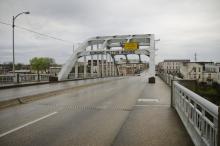
The journey to end systems of injustice begins with a single step. This theme resonates throughout the recently released film Selma, which recounts the events leading up to the famous Selma-to-Montgomery march. Led by Dr. Martin Luther King Jr., this march catalyzed the full enfranchisement of people of color through the Voting Rights Act of 1965.
The Voting Rights Act is considered to be one of the most successful achievements of the civil rights movement. But 50 years later, the residue of Jim Crow laws that banned people of color from voting lingers today in a new, subtle form: disenfranchisement laws for people with felony convictions.
Michelle Alexander’s book, The New Jim Crow, examines how these laws strip minority communities of their voice in the public sphere because of the disproportionately high percentage of racial minorities “swept into” America’s mass incarceration system.

Today is a dark day in our nation’s history. In a 5-4 ruling, the Supreme Court ruled in the case of Shelby County, Alabama v. Holder that Section 4 of the Voting Rights Act is unconstitutional, rendering the 48-year-old legislation impotent to protect citizens from voter suppression. Section 4 lists the states that must obtain “preclearance” from the Department of Justice before instituting changes to their voter laws. In her dissenting opinion, Justice Ruth Bader Ginsburg, said: “Throwing out preclearance when it has worked and is continuing to work to stop discriminatory changes is like throwing away your umbrella in a rainstorm because you are not getting wet.”
Only 48 years ago, on March 7, 1965, men, women, and children absorbed blasts of water, bone-crushing blows from police batons, and profound humiliation as Selma, Ala., police dragged limp black bodies over concrete on the far side of the Edmund Pettus Bridge. They had assembled on that day, which came to be known as “Bloody Sunday,” to march from Selma to Montgomery in protest of voter suppression and intimidation that had plagued the entire South. Ten days later, President Lyndon B. Johnson sent the Voting Rights Act to Congress. The bill passed in the Senate on May 26 by a vote of 77 – 19 and passed in the House on July 9 of that year. President Johnson signed the Act into law with Dr. Martin Luther King, Rosa Parks, and others present on August 6.
Flash forward to Fall 2012. I launched a blog series called “Watch the Vote” because, as of August 2012, 30 states had introduced legislation or enacted laws to hinder voters’ access to voting over the previous year. The Fair Elections Legal Network crafted this map to chart the spread of legal voter suppression initiatives across the nation. Notice, Alabama is one of the states that has recently passed voter restriction law that has not been precleared by the Department of Justice. Its new law, requiring photo ID and proof of citizenship, was set to take effect in 2014 before the Supreme Court ruled last week that Arizona’s voter ID law, which Alabama used as a model for its own, is unconstitutional.